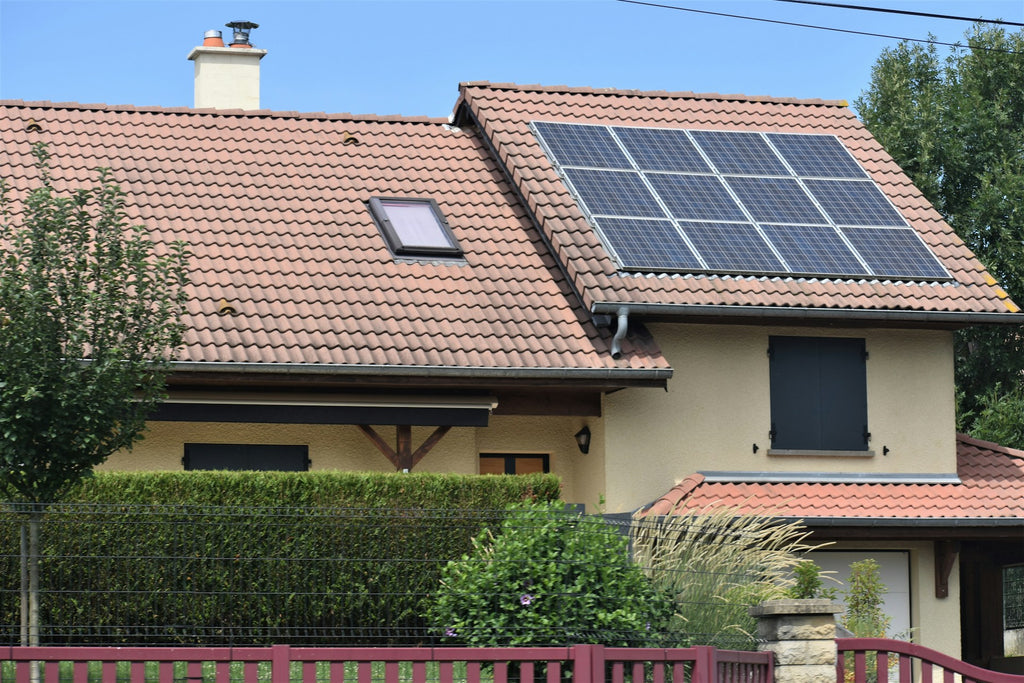
Integrating Solar Inverter With Battery Storage: What Homeowners Need to Know
In today's energy-conscious world, integrating solar inverter systems with battery storage has become a groundbreaking approach for homeowners. This integration not only propels energy efficiency but also fortifies home energy independence. We are writing to elucidate the critical aspects of solar and battery integration, shedding light on its multitude of benefits, installation, and maintenance.
Solar Inverter & Battery Storage System
A solar inverter is the brain of a solar energy system, transforming the direct current (DC) generated by solar panels into alternating current (AC), which powers homes and feeds excess energy back to the grid. Conversely, battery storage systems store surplus solar energy for later use, ensuring a continuous energy supply, especially during outages or non-sunny periods.
Integrating these two systems harnesses their collective strengths, elevating energy efficiency and reliability. For German homeowners, this means a seamless transition between solar power generation, grid supply, and energy storage, optimizing electricity usage and contributing significantly to energy conservation.
Benefits of Solar Inverter & Battery Storage System Integration
Increased Energy Independence
Integrating solar inverters with battery storage revolutionizes how homes in Germany manage their energy needs. This integration means less reliance on the public grid, safeguarding against unforeseen power outages and the volatility of energy prices. In practical terms, a home with integrated systems can maintain power during blackouts, ensuring lights stay on, refrigerators keep running, and heating systems continue operating. This level of autonomy not only provides peace of mind but also marks a significant stride toward energy self-reliance. German homeowners, known for their prudence and forward-thinking, can appreciate the security and independence that comes from such a setup, aligning perfectly with the country's push for greater energy self-sufficiency.

Enhanced Efficiency
The synergy between solar inverters and battery storage maximizes the utility of every generated kilowatt-hour. Traditional systems without storage capabilities often waste solar energy during peak production times when there's no immediate demand. However, with integrated storage, excess energy is captured rather than lost, available for use during the evening or on cloudy days, which are common in Germany, especially during winter. This shift means homeowners can significantly reduce their reliance on expensive grid electricity, particularly during peak tariff hours, leading to noticeable reductions in monthly energy bills. Additionally, this efficient use of energy aligns with the German ethos of efficiency and resourcefulness, ensuring that no resource, however abundant, goes to waste.
Environmental Impact
Germany is at the forefront of environmental conservation and climate action, and integrating solar with battery storage plays directly into this narrative. By utilizing the sun's clean, inexhaustible energy and storing it for later use, homeowners significantly reduce their reliance on fossil fuels. This reduction in carbon footprint is a direct contribution to combating climate change, a subject close to the heart of many Germans. Beyond personal gains, adopting such systems sends a strong message of commitment to global sustainability efforts. It showcases a move from passive support to active participation in the green revolution. The environmental benefits extend beyond the immediate; they contribute to a legacy of a healthier, more sustainable planet for future generations, resonating with Germany's long-term goals for a greener future.

Cost and Return on Investment
- Initial Installation Costs: Integrating a solar inverter with battery storage involves an initial financial commitment. In Germany, costs can vary widely based on the size and quality of the system, ranging from a few thousand to several tens of thousands of euros. This variance depends on factors like the capacity of the solar panels, the size of the battery storage, and the complexity of the installation. For instance, a standard residential solar system with storage capacity might cost between €5,000 and €20,000. It's crucial for homeowners to consider their energy needs and consult with professionals to determine the most cost-effective system size and configuration.
- Savings and Economic Benefits: Despite the upfront costs, the long-term financial benefits can be significant. In Germany, where residential electricity prices are among the highest in Europe, averaging about 30 to 35 cents per kilowatt-hour, the potential savings are substantial. By generating and storing their own electricity, homeowners can drastically reduce their reliance on grid power, translating into savings of hundreds to thousands of euros annually. Moreover, solar panels and batteries have long lifespans, typically 20-25 years and 10-15 years respectively, ensuring that the initial investment pays back over time. The break-even point varies but can be as early as 5 to 12 years, depending on energy usage, system size, and local electricity rates.
- Government Incentives and Subsidies: The German government, committed to advancing renewable energy, offers various incentives to offset the initial costs. Programs like the KfW loans and subsidies, the Renewable Energy Sources Act (EEG), and regional incentives provide financial support in the form of low-interest loans, grants, and feed-in tariffs. For example, KfW Bankengruppe offers programs that can cover a significant portion of the installation costs for solar energy systems and battery storage. Additionally, homeowners can benefit from reduced VAT rates and possible tax deductions. These incentives not only make solar plus storage solutions more affordable but also underline the national commitment to a sustainable energy future. Homeowners are advised to research the most current incentives and calculate their impact on the overall investment to understand the full scope of financial benefits available to them.
Installation and Maintenance
Choosing the Right Equipment
Integrating solar and battery systems begins with selecting the appropriate equipment. In Germany, this means considering the unpredictable weather and varying daylight hours. Homeowners should seek solar inverters and batteries that can withstand these conditions while meeting their energy needs. The chosen inverter should efficiently convert DC from solar panels into AC for home use, while the battery should have sufficient capacity to store excess energy. Compatibility with existing solar panels is crucial to avoid additional costs or inefficiencies.
Furthermore, the quality of these components cannot be overstated-opt for well-reviewed brands with proven track records in durability and performance. Warranties are equally important; a longer warranty period often indicates the manufacturer's confidence in their product.
Installation Process
Installation should always be performed by certified professionals. This process starts with a detailed assessment of your home's energy needs and roof space. Based on this, a tailored system design is proposed. Following your approval, the installer will manage the necessary permits, ensuring the project complies with local building codes and energy regulations.
The actual installation typically spans a few days, involving mounting the solar panels, setting up the inverter and battery, and connecting the system to your home's electrical grid. Post-installation, the system undergoes thorough testing and inspection by local authorities or designated inspectors to certify its safety and functionality.
German homeowners should engage with reputable installers who not only provide comprehensive services but also assist in navigating the bureaucratic aspects, such as securing the Erzeugeranlagen am Niederspannungsnetz approval for connecting to the public grid.

Ongoing Maintenance
Solar panels require minimal upkeep-mostly cleaning to remove dust, leaves, or snow that might block sunlight. In Germany's varied climate, routine checks every six months are advisable to maintain optimal performance. Battery maintenance is slightly more involved but still manageable. Homeowners should monitor the battery's state of charge and health through the system's management software. Regular firmware updates and health checks can preempt issues, ensuring the battery operates safely and effectively.
Additionally, periodic professional check-ups can help diagnose and rectify any potential issues early on. While modern systems are designed to be robust, regular maintenance ensures they run smoothly over their intended lifespan, safeguarding your energy independence and investment.
Conclusion
The integration of solar inverters with battery storage presents a forward-thinking solution for energy management in German homes. It epitomizes the shift towards sustainable living, offering a blend of economic, environmental, and practical benefits.
We encourage homeowners to consider this integration as a proactive step towards a sustainable and self-sufficient lifestyle, in harmony with Germany's energy transition goals. The time to act is now, as the benefits far outweigh the initial investment, aligning with both personal and global sustainable energy objectives.

Leave a comment